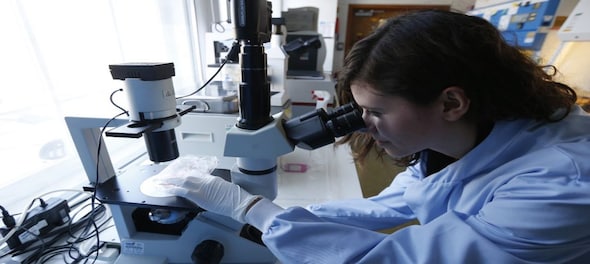
Science, technology and innovation have the potential to bring about a radical change in the lives of the people. They play a pivotal role in the growth of a nation. For women and girls, this has brought a new ecosystem of freedom and employment opportunities.
However, the number of women in science continues to be low. The situation for women in science may have improved over the years but the progress has been slow. Women in science still face discrimination but it is in a more subtle way.
Disparities in funds, limited promotion avenues, few leadership roles and lack of mentorship have resulted in low retention of women in the field of science.
Pressure Points
According to the Global Gender Gap Report 2023 both the representation and retention of women in science continues to be skewed. Linkedin data on member’s job profiles show that women remain significantly underrepresented in the STEM (Science, technology, engineering, and mathematics) workforce. Women make up almost half (49.3%) of total employment across the non-STEM occupations but just 29.2% of all STEM workers.
While the percentage of female STEM graduates entering into employment is increasing with every cohort, the numbers on the integration of STEM university graduates into the labour market show that the retention of women in this space even one year after graduation sees a significant drop.
Women currently account for 29.4% of entry-level workers; yet for high-level leadership roles, representation drops tremendously. When it comes to artificial intelligence (AI) specifically, talent availability overall has surged, increasing six times between 2016 and 2022, yet female representation in AI is progressing very slowly. The percentage of women working in AI today is approximately 30%, roughly 4 percentage points higher than it was in 2016.
A 2022 study conducted in 117 countries found that one in two women scientists reported experiencing sexual harassment at work, with 65 percent of respondents reporting that this negatively impacted their career. The report cited that one on two (49%) women scientists say they have personally experienced at least one situation of sexual harassment during their career. Seven out of 10 scientists interviewed felt that sexism and sexual harassment in research are not talked about enough.
Data from different sources has shown that women scientists tend to be paid less and sometimes also have shorter careers. They are less likely to be promoted to the top level.
The Road Ahead
For tackling gender inequalities in science one must begin inculcating the values of science in girls from early in life. Interest in science also must be developed at an early age. The girls should be made aware of the careers that are available in science and how best they can contribute. In developing countries, gender disparity in STEM includes various factors including familial, social and cultural. The lower representation of female scientists in the STEM fields translates into fewer leadership roles and mentoring opportunities for women.
According to a 2022 study published in PLOS ONE there is a high work related stress, poor work-life balance and sexual harassment faced by the female scientists. Intrinsic factors like self-motivation, confidence and dedication and extrinsic institutional factors like flexible working time, female friendly management policies, fair appraisal and mentorship appear to improve the stress, work-life balance and consequently the productivity of female scientists.
There is a general complaint among women scientists on not getting a feel of being belonged. This can be overcome by endeavouring to increase the visibility of women in STEM—perhaps as Nobel Prize recipients. It is important for a young girl to see a woman scientist climb up to that stage. This will have a positive mentorship. This will act as a strong motivator.
To arrest the problem of harassment, concrete steps needs to be mapped for more effective interventions.The institutions should map out a vocal message of intolerance towards sexual harassment. The messages can be drawn through posters and regular social media outreach.
Funding and financial inequity also contributes to lack of retention of women scientists. Erasing the financial disparities is vital to promote the advancement of women in science. There should be a regular review of the compensations so that there is no resentment because of financial disparities. There is also a need to raise awareness of the pressure points in the career trajectory of a woman scientist. A joint effort is needed between the universities, government and funding agencies to remove the various barriers and biases.
Women are coming forward to pursue a career in science. The challenge is to retain them.
(Edited by : C H Unnikrishnan)
Check out our in-depth Market Coverage, Business News & get real-time Stock Market Updates on CNBC-TV18. Also, Watch our channels CNBC-TV18, CNBC Awaaz and CNBC Bajar Live on-the-go!


10% discount on fare on Mumbai Metro lines 2 and 7A on May 20
May 3, 2024 2:40 PM
'Rahul Gandhi deserted Amethi due to fear of Smriti Irani': How BJP plans to puncture Congress' UP plan
May 3, 2024 1:12 PM

